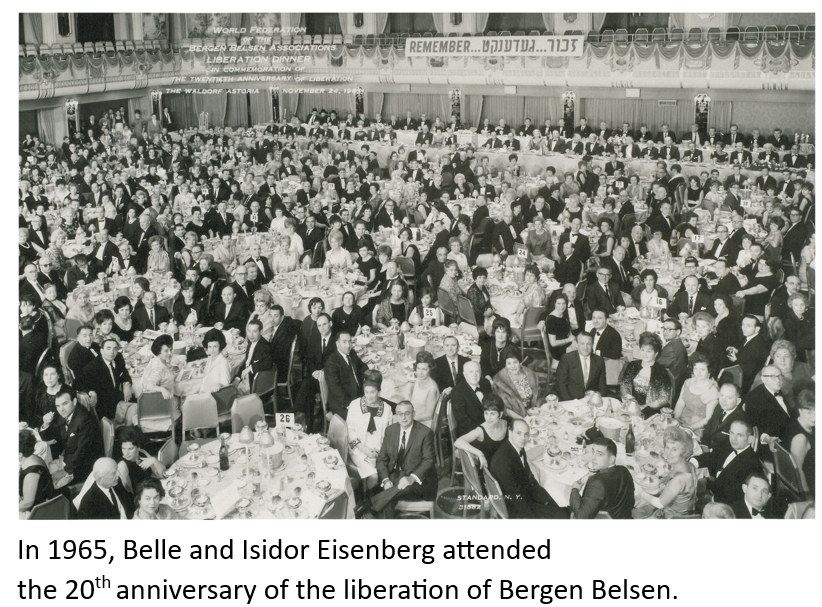Experience: Majdanek

|

|

|
|
|
|
|
|
|
|
|
|
|
|
|
|
“Concentration camp located in a suburb of Lublin, Poland. During World War II, it was part of the Generalgouvernement. The camp's official purpose was to destroy enemies of the Third Reich, help carry out the extermination of the Jews, and take part in the deportations and "resettlement" of the Poles living in the Zamosc region of the Generalgouvernement. In all, approximately 360,000 victims perished at Majdanek.
“Majdanek covered 667 acres of land on the highway connecting Lublin, Zamosc, and Chelm. The perimeter incorporated a highly electrified double barbed-wire fence and 19 watchtowers, where guards stood watch to ensure no one escaped. The camp was comprised of 5 sections, including; 22 prisoner barracks, 7 gas chambers, 2 wooden gallows, a small crematorium, and various other “essential” buildings such as storehouses, workshops, laundries, and coal storehouses. A larger crematorium was added in September 1943. Up to 45,000 prisoners could be housed at Majdanek at a time.
“The SS quarters were comprised of living quarters, the camp commandant's offices, and a casino. Majdanek also maintained many satellite camps, such as Budzin, and camps in Radom and Warsaw. The Nazis had grand plans to expand Majdanek. They wanted to build barracks for 250,000 prisoners, industrial factories, additional gas chambers, and a more effective crematorium. However, their full plans were never realized. From its opening in September 1941 to its liberation in July 1944, five different camp commandants ran Majdanek - Karl Koch, Max Koegel, Herman Florsted, Martin Weiss, and Arthur Liebehenschel.
“The first prisoners arrived at Majdanek in October 1941. Throughout the next two and a half years many groups followed. These included inmates from Soviet prisoner-of-war camps and other concentration camps, such as Sachsenhausen, Dachau, Buchenwald, Auschwitz, Neuengamme, and Flossenberg. Other groups included Polish civilians who had been arrested in German raids or had been prisoners elsewhere, Jews from Poland, Germany, Czechoslovakia, the Netherlands, France, Hungary, Belgium, and Greece, non-Jews from Belorussia and Ukraine, and Polish farmers from the Zamosc region who had been forcefully removed from their homes.
“Tens of thousands of Jews were deported to Majdanek from Warsaw after the Warsaw ghetto uprising in April 1943, and thousands of Jews from Bialystok were brought to the camp after the liquidation of the ghetto in August 1943.
“Altogether some 150,000 people, from 28 countries of 54 nationalities, were incarcerated in Majdanek during its years in operation. In an overview of death toll estimates for Majdanek, Polish researcher Tomasz Kranz1 estimated some 60,000 Jews perished in the camp (of those, 24,733 died in 1942, and some 18,000 died on November 3, 1943, as part of “Erntefest” operation). In all, he estimates the number of victims in Majdanek at some 78,000. Kranz presented earlier estimates as well. For instance, in a widely circulated 1948 assessment, Zdzislaw Łukaszkiewicz estimated some 360,000 perished (of which 200,000 were listed prisoners). Łukaszkiewicz estimated that of these, some 200,000 were Jews and 100,000 Poles. In 1966 the estimate was lowered to 120,000 Jews.
“Many Majdanek prisoners died due to conditions in the camp - disease, starvation, temperature exposure, overwork, and exhaustion, or by beatings by camp guards. Others were murdered in mass killing actions - gas chambers and executions. Some of the prisoners were sent directly to the gas chambers upon arrival. In this sense, Majdanek operated as an extermination camp.
“In 1941 and 1942 the Germans shot sick Soviet prisoners of war; in April 1942 they shot 2,800 Jews. That spring, thousands of other prisoners were also shot to death. The summer of 1943 witnessed the execution of 300 Soviet army officers in the same manner. Finally, on November 3, 1943, approximately 18,000 Jews were shot to death in one single day. This final massacre was part of the "Erntefest" operation. The Jews were shot into giant pits, whilst in the background, the Germans blared dance music to drown out the sounds of the killing and the dying. Most of those gassed to death in the gas chambers were Jews. Some of the Jewish prisoners were taken immediately to the gas chambers upon arrival at Majdanek. In this regard, some historians consider Majdanek to be an extermination camp, not only a concentration camp.
“Several resistance movements existed at Majdanek, and from time to time, groups or individuals attempted to escape the camp. The Polish prisoners at Majdanek were aided by the Polish resistance movement, and Polish aid organizations, such as the Polish Red Cross or the Central Welfare Council (see also Central Welfare Council, Poland).
“By July 1944, the advancing Soviet army was very close, and thus the Nazis liquidated Majdanek. Approximately 1,000 prisoners were evacuated with only half of them reaching Auschwitz. Prior to leaving the camp, the staff destroyed incriminating documents and burnt down the large crematorium along with other buildings. However, in their urgency to flee the camp they neglected to destroy most of the prisoners' barracks and the gas chambers. The Soviet army liberated the camp on July 24. Only a few hundred Jewish prisoners remained.”
“Immediately following the camp's liberation, a joint Polish-Soviet commission began looking into the war crimes, which had been committed at Majdanek. Less than 2 months later it published its report. Only a very small number of the 1,300 staff that had worked at Majdanek was even brought to trial. In November 1944, six SS men were tried for their service at Majdanek. Four were sentenced to death, while the other two took their own lives before they could be sentenced. From 1946--1948 another 95 SS men from Majdanek, mostly guards, were put on trial. Seven were given the death sentence, while the rest were sentenced to jail. From 1975-1980 an additional 16 men who had worked in Majdanek were tried in Germany.”
“Today, Majdanek remains one of the best-preserved examples of what a Nazi camp looked like. Several major sections of the camp are still standing; they constitute a museum memorializing those who perished there at the hands of the Nazis. The original gas chambers and crematoria are now a silent tribute to the 360,000 victims of Majdanek. Next to the gas chamber building stands a dome-shaped structure that shrouds a colossal pile of ashes taken from the camp's crematoria.”
Accessed on July 26, 2011
Encyclopedia of the Holocaust - Hebrew Edition 1990
Yad Vashem
Accessed on July 26, 2011
Three albums of photographs of significant world events in the years 1918-1945
Lester Hajenina
Yad Vashem
Accessed on July 26, 2011
Three albums of photographs of significant world events in the years 1918-1945
Lester Hajenina
Yad Vashem
Accessed on July 26, 2011
Yad Vashem Photo Archive
Martin & Ellen Burton
Accessed on July 26, 2011
Yad Vashem Photo Archive
State Central Photos and Film Archive, Kiev
Genadi Kogan
Accessed on July 26, 2011
Contact us
thank you!
Your application is successfuly submited. We will contact you as soon as possible
thank you!
Your application is successfuly submited. Check your inbox for future updates.